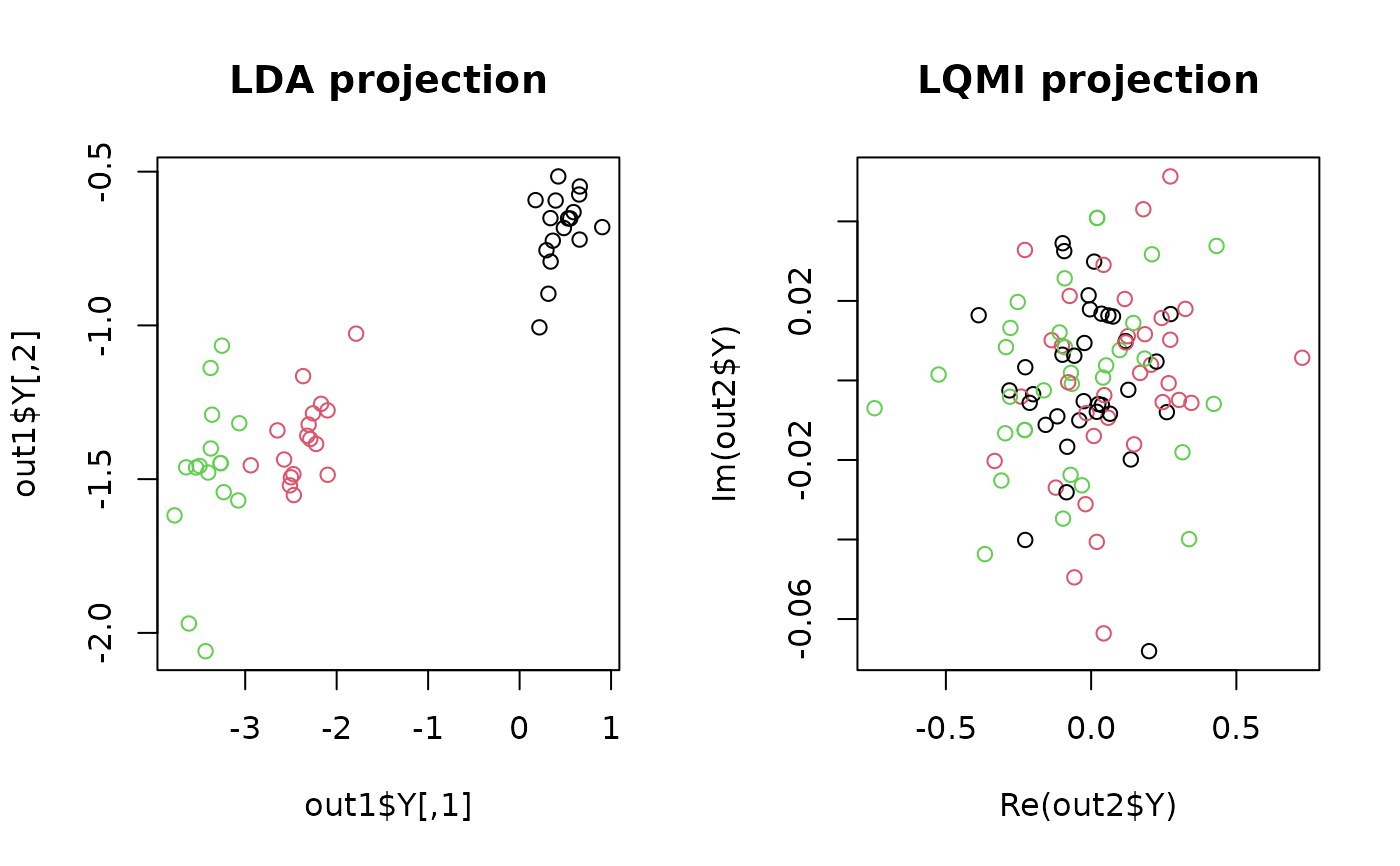Linear Quadratic Mutual Information (LQMI) is a supervised linear dimension reduction method. Quadratic Mutual Information is an efficient nonparametric estimation method for Mutual Information for class labels not requiring class priors. For the KQMI formulation, LQMI is a linear equivalent.
do.lqmi(
X,
label,
ndim = 2,
preprocess = c("center", "scale", "cscale", "whiten", "decorrelate")
)Arguments
- X
an \((n\times p)\) matrix or data frame whose rows are observations and columns represent independent variables.
- label
a length-\(n\) vector of data class labels.
- ndim
an integer-valued target dimension.
- preprocess
an additional option for preprocessing the data. Default is "center". See also
aux.preprocessfor more details.
Value
a named list containing
- Y
an \((n\times ndim)\) matrix whose rows are embedded observations.
- trfinfo
a list containing information for out-of-sample prediction.
- projection
a \((p\times ndim)\) whose columns are basis for projection.
References
Bouzas D, Arvanitopoulos N, Tefas A (2015). “Graph Embedded Nonparametric Mutual Information for Supervised Dimensionality Reduction.” IEEE Transactions on Neural Networks and Learning Systems, 26(5), 951--963.
See also
Examples
## use iris data
data(iris)
set.seed(100)
subid = sample(1:150, 50)
X = as.matrix(iris[subid,1:4])
label = as.factor(iris[subid,5])
## compare against LDA
out1 = do.lda(X, label)
out2 = do.lqmi(X, label)
## visualize
opar <- par(no.readonly=TRUE)
par(mfrow=c(1,2))
plot(out1$Y, col=label, main="LDA projection")
plot(out2$Y, col=label, main="LQMI projection")
 par(opar)
par(opar)